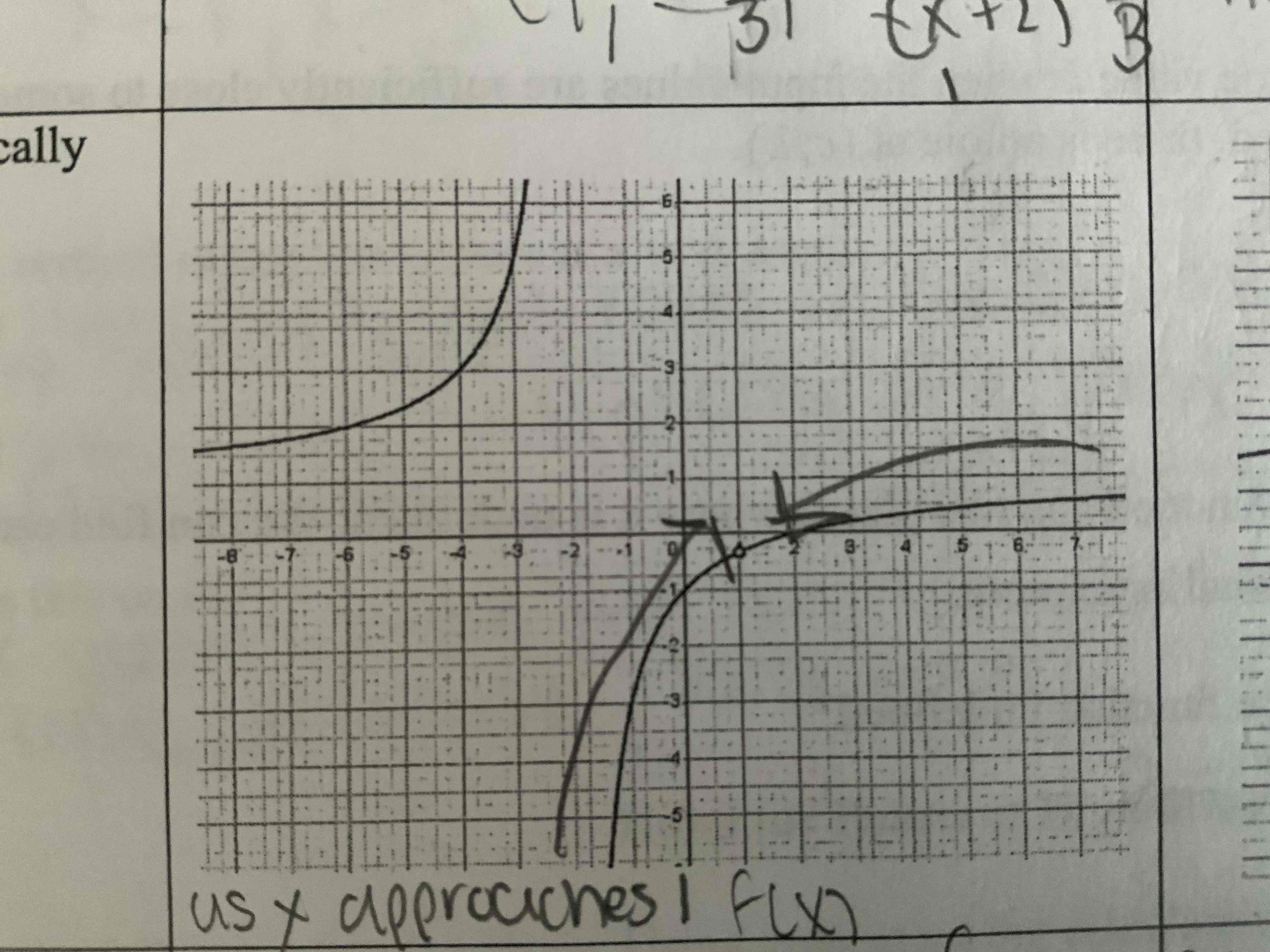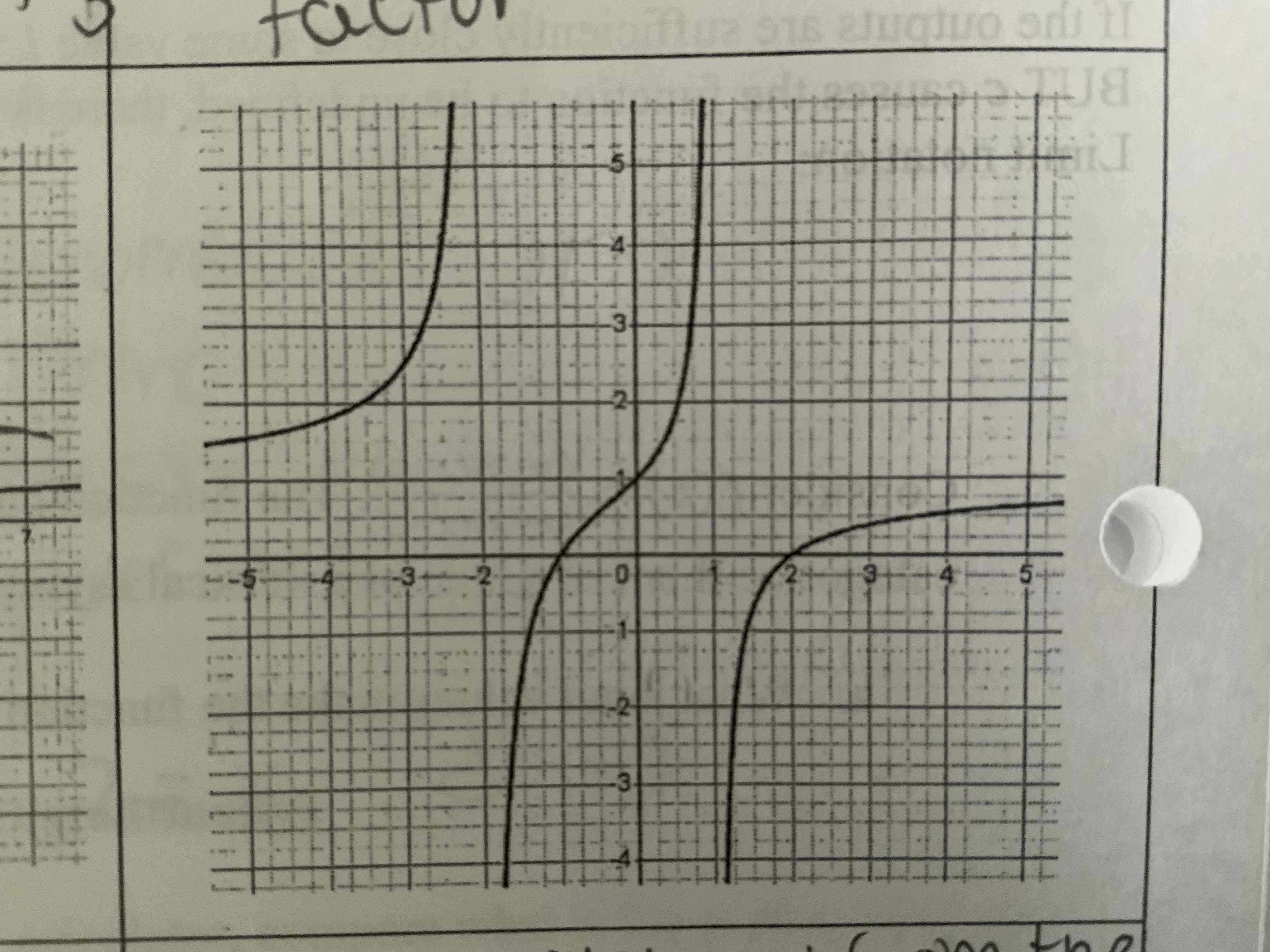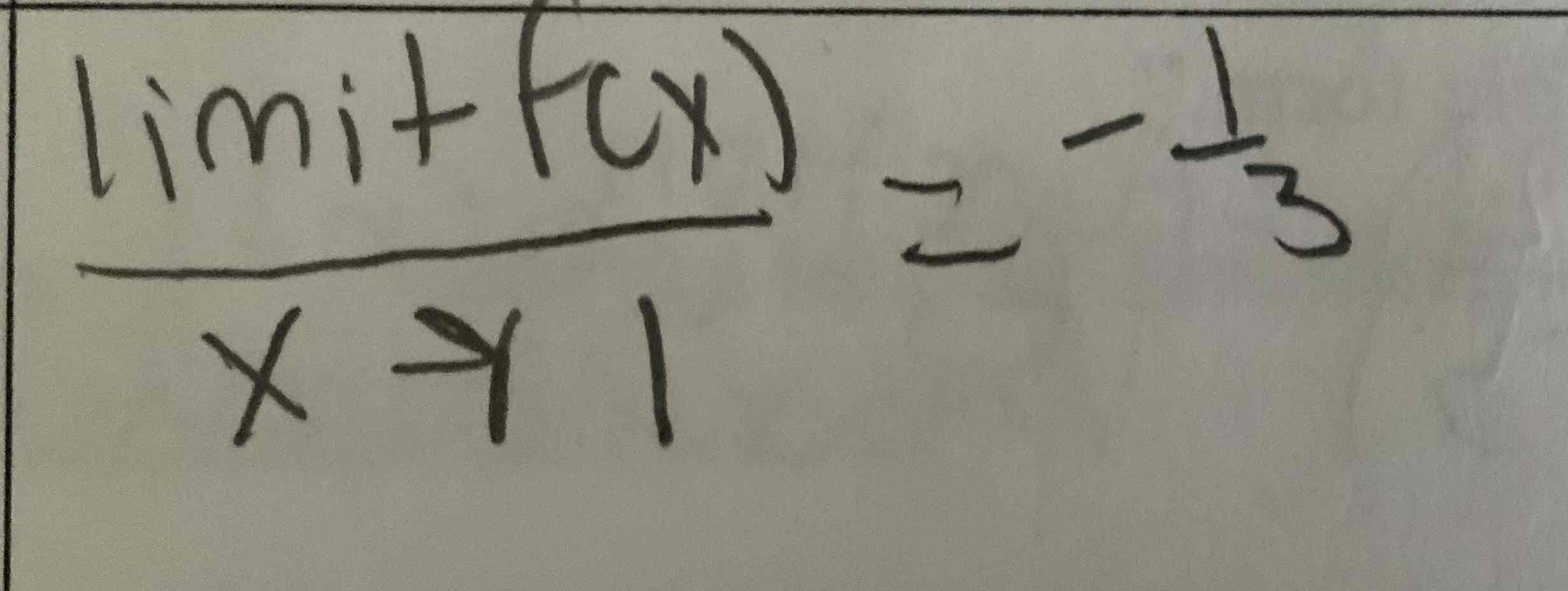1.8/1.9/1.10 rational functions and vertical asymptotes and holes + rational functions and zeros
1/17
There's no tags or description
Looks like no tags are added yet.
Name | Mastery | Learn | Test | Matching | Spaced |
|---|
No study sessions yet.
18 Terms
F(x) as x —> b+
F(x) gets larger and closer to positive infinity because x valued are decreasing towards b and smaller numbers gives larger outputs.
f(x) as x —> b-
f(x) gets smaller and closer to negative infinity because as x values are increasing towards b smaller outputs are produced
Vertical asymptote definition
f(x) increases or decreases without bound as x approaches b from the left and right
where a vertical asymptote occurs
When the multiplicity of a common factor is greater in the denominator
There are real roots in the denominator that aren’t there in the numerator
The unique characteristic of vertical asymptotes
makes the function undefined and the outputs increase/decrease without bound
Hole definition
when the function is not continuous
characteristics of a functions with holes
there is a common factor in the numerator and denominator
The multiplicity of a common factor is greater in the numerator
Characteristics of both holes and vertical asymptotes
Both are located at undefined places
Holes in a rational function algebraically
in numerators and denominators with the same multiplicity that cancel out
holes graphically
Image

vertical asymptotes graphically
image

holes verbally
As x approaches x value of hole f(x) approaches y value of hole
Vertical asymptotes verbally
As x approaches b from the left g(x) increases without bound
as x approaches b from the right g(x) decreases without bound
limit notation from hole
image

limit notation of vertical asymptote from left
limit g(x) = inifinity
x —> b-
limit notation of vertical asymptote from right
limit g(x) = - infinity
x —> 1+
Zeros of a numerator
Roots of a rational function in algebraic form
Zeros of a denominator
Vertical asymptotes of a rational function in algebraic form